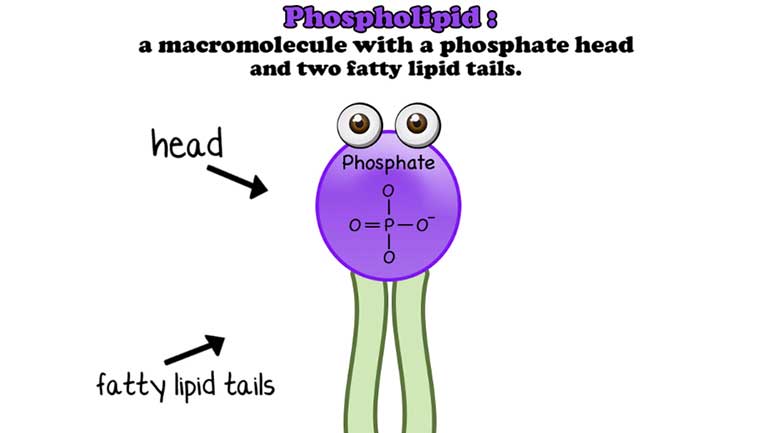ShmoopTube
Where Monty Python meets your 10th grade teacher.
Search Thousands of Shmoop Videos
Molecular Genetics: DNA Extraction 311 Views
Share It!
Description:
In this video from our course on molecular genetics, learn all about DNA extraction.
Transcript
- 00:00
[ whoosh ]
- 00:01
We speak student!
- 00:03
[ whoosh ]
- 00:05
Molecular Genetics
- 00:06
DNA Extraction
Full Transcript
- 00:08
A la Shmoop
- 00:11
Okay, we're back with you in the land of biology
- 00:14
and we're gonna talk about DNA extraction
- 00:17
with Dr. Ruth Tennen here who is a guru on the subject.
- 00:19
So, Dr. Ruth, why would anyone want to
- 00:23
extract DNA in the first place?
- 00:26
What does that do for us?
- 00:27
Like, when I go to Vermont,
- 00:29
I understand why I want to extract maple syrup -
- 00:31
because it tastes good.
- 00:32
[ pop ] [ mm-mm ]
- 00:35
Why would anyone want to extract DNA?
- 00:38
A similar idea. So, maple syrup doesn't do you any good
- 00:40
- when it's in the tree. - Right.
- 00:41
Just like if you wanna study the DNA,
- 00:43
you should get it out of the cell.
- 00:44
So, tons of reasons you might wanna do this.
- 00:46
Let's say you wanna do some forensic testing.
- 00:49
So you found DNA at a crime scene
- 00:50
and you want -- you have a suspect, you gotta take his DNA.
- 00:52
You have to extract his or her DNA out of their cells and test it.
- 00:55
Same thing with genetic testing. You can't really sequence
- 00:58
or figure out what the sequence of DNA is
- 01:00
while it's in someone's cell.
- 01:01
So you have to burst open the cell, take out the DNA,
- 01:03
so you can study it and sequence it.
- 01:04
Wow, that's really cool.
- 01:05
So the obvious question is -
- 01:08
How do you extract DNA?
- 01:11
Can we buy a kit that does that for home use?
- 01:14
Well, you can buy a kit if you're in the lab.
- 01:16
Home use is actually super easy. Just use the kitchen ingredients.
- 01:19
There's just a few steps. So the first thing you have to do
- 01:21
is break open the cell.
- 01:22
And you can do that by grinding them.
- 01:24
You can often add detergent.
- 01:26
So, soap is something that will break up the [ indistinct ].
- 01:29
- Wait, go back. Grinding cells? - Yeah.
- 01:31
I'm thinking about the maize flour thing, so you take --
- 01:34
The mortar and pestle, yeah. That'll do it.
- 01:35
Wow. So, wait a sec. We've got dried blood
- 01:38
from the, I don't know, the guy who got shot.
- 01:40
And you, like, stick it in a bowl
- 01:42
and it dries and you pound it?
- 01:44
So, probably, if they were doing it in a lab,
- 01:46
they would not use that.
- 01:47
- They have, like, a little tube that'll do everything. - [ laughs ] Yeah, right. Understood.
- 01:49
But if you wanna take your cheek cells,
- 01:51
you basically could just slough them off using Gatorade
- 01:53
and then spit them in a tube
- 01:54
and they would kind of --
- 01:55
that sort of mechanical chewing would separate them a little bit.
- 01:58
Wow. That's gross and really cool at the same time.
- 02:00
- It's pretty awesome. - Yeah. Okay, keep going.
- 02:02
Sure, so, you've got your cells that you got out of your organism
- 02:06
- however you did. - [ laughs ]
- 02:07
And then you would add detergent and salt,
- 02:10
which basically breaks open the cell membrane
- 02:12
and the nuclear membrane.
- 02:13
So that'll kind of release the DNA.
- 02:15
The problem at that point is that the DNA
- 02:16
is still mixed up with all the other gunk in the cells.
- 02:19
And we say "release the membrane."
- 02:20
So, the membrane's like the skin around it.
- 02:22
Like a balloon or something? - Yup.
- 02:23
And that melts the skin and the goop inside, then,
- 02:26
kind of comes out.
- 02:27
Exactly. So the membrane is made up of phospholipids,
- 02:29
so, like, fats. And so, if you add detergent to that,
- 02:31
it'll break it up just like it'll break up grease on a plate.
- 02:35
Got it. Okay.
- 02:37
So then we've added rubbing alcohol --
- 02:40
- So that's the next step. Exactly. - Okay.
- 02:42
So you've got your DNA, but it's mixed in with
- 02:43
- all this other stuff in the cell that you don't want. - Mm-hmm.
- 02:45
And DNA has an interesting property where, if you add rubbing alcohol,
- 02:48
or even ethanol, it'll precipitate out of solution.
- 02:51
Which means that it will form a solid when it used to be in solution.
- 02:56
And that's because, like, the alcohol evaporates quicker or something
- 02:59
and what's left is porridge.
- 03:00
The way that I usually think about it is that
- 03:02
DNA likes to dissolve in water,
- 03:04
but it doesn't like to dissolve in alcohol.
- 03:06
So it's kind of, like, scared out of the water.
- 03:07
And when it hits the interface between the water and the alcohol
- 03:10
it kind of forms just a solid right there.
- 03:12
Huh. That's how Michael Phelps did it.
- 03:13
[ cheering ]
- 03:15
So then go through then -- so what happens?
- 03:17
Then the alcohol dries, and we stick the goopy stuff back in the water?
- 03:22
So, yeah, what you'd end up with is
- 03:24
you'd have, like, a little pellet of dried up DNA.
- 03:26
Which is also not useful,
- 03:27
because you ultimately need it to be in a liquid form
- 03:28
for most of the tests that you do.
- 03:30
So you just add some water, wait a little bit, heat it up,
- 03:32
and then it re-dissolves and you've got pure DNA in liquid form.
- 03:35
[ woo! ]
- 03:36
Wow, that's really cool.
- 03:38
It's pretty cool and it's really easy.
- 03:39
Especially if you do it with something like strawberries,
- 03:40
that have tons of DNA.
- 03:41
[ hey! ] [ groan ]
- 03:43
All right, well, kids, do try this at home.
- 03:45
Amaze and amuse your friends.
- 03:47
Okay, that's it. DNA extraction.
- 03:51
[ whoop ]
- 03:52
Why would anyone want to extract DNA?
- 03:55
How do you extract DNA?
- 03:59
[ hey! ]
Up Next
In this video, we dive beneath the sea to review the kinds of interesting animals that live in the deep blue.
Related Videos
Anything that has a cell (bacteria, listen up!) has phospholipids that keep the cell contained and give it form and shape. Phospholipids protect us...
GMOs. Now that’s a scary word. Or is it? Guess it’s time to ask ourselves: WWMST? ...For those of us who don’t constantly ask ourselves “wh...




